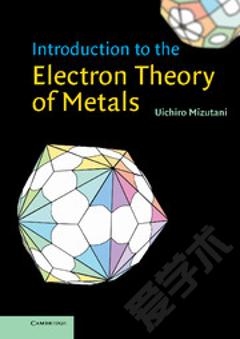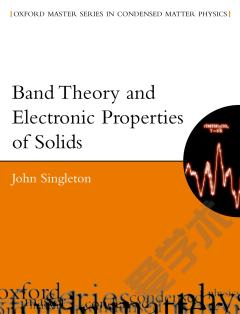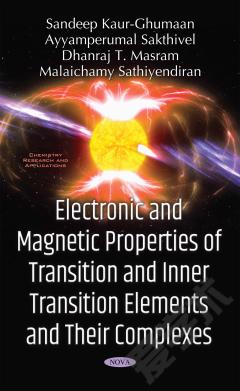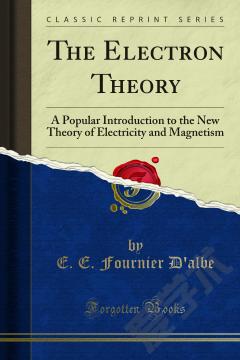Electronic Structure and Properties of Transition Metal Compounds —— Introduction to the Theory
----- 过渡金属化合物的电子结构与特性;理论纲要,第2版
Preface. Foreword to the First Edition. Mathematical Symbols. Abbreviations. 1 Introduction: Subject and Methods. 1.1 Objectives. 1.2 Definitions of Chemical Bonding and Transition Metal Coordination System. 1.3 The Schrodinger Equation. Summary Notes. References. 2 Atomic States. 2.1 One-Electron States. 2.2 Multielectron States: Energy Terms. Summary Notes. Questions. Exercises and Problems. References. 3 Symmetry Ideas and Group-Theoretical Description. 3.1 Symmetry Transformations and Matrices. 3.2 Groups of Symmetry Transformations. 3.3 Representations of Groups and Matrices of Representations. 3.4 Classification of Molecular Terms and Vibrations, Selection Rules, and Wigner-Eckart Theorem. 3.5 Construction of Symmetrized Molecular Orbitals and Normal Vibrations. 3.6 The Notion of Double Groups. Summary Notes. Exercises. References. 4 Crystal Field Theory. 4.1 Introduction. 4.2 Splitting of the Energy Levels of One d Electron in Ligand Fields. 4.3 Several d Electrons. 4.4 f -Electron Term Splitting. 4.5 Crystal Field Parameters and Extrastabilization Energy. 4.6 Limits of Applicability of Crystal Field Theory. Summary Notes. Questions. Exercises and Problems. References. 5 Method of Molecular Orbitals and Related Approaches. 5.1 Basic Ideas of the MO LCAO Method. 5.2 Charge Distribution and Bonding in the MO LCAO Method and the Case of Weak Covalency. 5.3 Methods of Calculation of MO Energies and LCAO Coefficients. 5.4 Semiquantitative Approaches. 5.5 Semiempirical Methods. 5.6 Fragmentary Calculations, Molecular Mechanics, and Combined Quantum/Classical (QM/MM) Modeling. 5.7 General Comparison of Methods. Summary Notes. Exercises and Problems. References. 6 Electronic Structure and Chemical Bonding. 6.1 Classification of Chemical Bonds by Electronic Structure and Role of d and f Electrons in Coordination Bonding. 6.2 Qualitative Aspects and Electronic Configurations. 6.3 Ligand Bonding. 6.4 Energies, Geometries, and Charge Distributions. 6.5 Relativistic Effects. Summary Notes. Exercises and Problems. References. 7 Electronic Control of Molecular Shapes and Transformations via Vibronic Coupling. 7.1 Molecular Vibrations. 7.2 Vibronic Coupling. 7.3 The Jahn-Teller Effect. 7.4 Pseudo-Jahn-Teller Effect and the Two-Level Paradigm. Summary Notes. Exercises and Problems. References. 8 Electronic Structure Investigated by Physical Methods. 8.1 Band Shapes of Electronic Spectra. 8.2 d d, Charge Transfer, Infrared, and Raman Spectra. 8.3 X-Ray and Ultraviolet Photoelectron Spectra EXAFS. 8.4 Magnetic Properties. 8.5 Gamma-Resonance Spectroscopy. 8.6 Electron Charge and Spin Density Distribution in Diffraction Methods. Summary Notes. Exercises and Problems. References. 9 Stereochemistry and Crystal Chemistry. 9.1 Definitions. Semiclassical Approaches. 9.2 Vibronic Effects in Stereochemistry. 9.3 Mutual Influence of Ligands. 9.4 Crystal Stereochemistry. Summary Notes. Exercises and Problems. References. 10 Electron Transfer, Redox Properties, and Electron-Conformational Effects. 10.1 Electron Transfer and Charge Transfer by Coordination. 10.2 Electron Transfer in Mixed-Valence Compounds. 10.3 Electron-Conformational Effects in Biological Systems. Summary Notes. Exercises and Problems. References. 11 Reactivity and Catalytic Action. 11.1 Electronic Factors in Reactivity. 11.2 Electronic Control of Chemical Activation via Vibronic Coupling. 11.3 Direct Computation of Energy Barriers of Chemical Reactions. Summary Notes. Questions and Problems. References. Appendixes. Answers and Solutions. Subject Index. Formula Index.
{{comment.content}}








 京公网安备 11010802027623号
京公网安备 11010802027623号